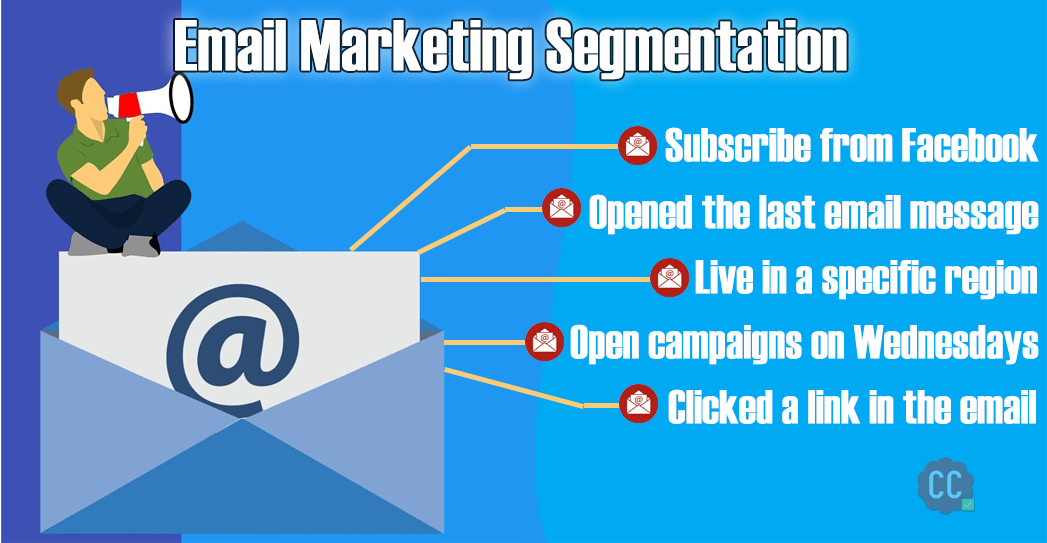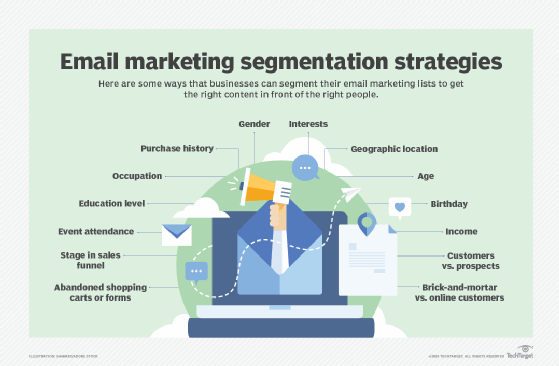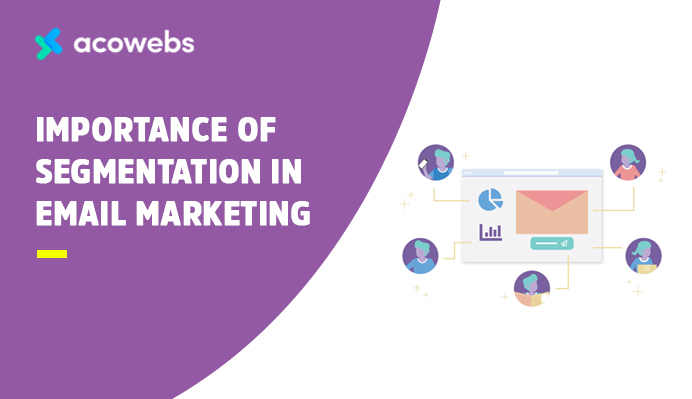Segmentation in email marketing boosts effectiveness and engagement. It’s a key strategy to reach specific audiences with targeted messages.
Email marketing is a powerful tool for businesses. But sending one email to everyone often falls short. That’s where segmentation comes in. By dividing your email list into smaller groups, you can tailor your messages to match the interests and behaviors of your audience.
This personalized approach not only grabs attention but also builds stronger connections. Readers feel understood and valued. In this blog post, we will explore why segmentation is so crucial in email marketing. From increased open rates to higher sales, discover the many benefits of this essential marketing technique. Stay tuned to learn how segmentation can transform your email campaigns.
Introduction To Email Segmentation
Email segmentation is a powerful tool in email marketing. It helps businesses target specific groups within their audience. This approach can lead to higher engagement and better results. Let’s dive into the basics of email segmentation to understand its importance.
What Is Email Segmentation?
Email segmentation is the process of dividing your email list into smaller groups. These groups share common characteristics or behaviors. For example, you can create segments based on age, location, or purchase history. By doing this, you can send more relevant content to each group.
Relevant content means that subscribers receive emails they care about. This increases the chances of them opening and engaging with your emails. In short, email segmentation makes your marketing efforts more effective.
History Of Email Segmentation
Email segmentation has evolved over time. In the early days of email marketing, businesses sent the same email to everyone. This approach often led to low engagement and high unsubscribe rates. Marketers soon realized the need for more targeted communication.
As email marketing platforms improved, so did segmentation techniques. Today, advanced tools allow for detailed segmentation. Marketers can now segment their audience based on various data points. This evolution has led to more personalized and effective email campaigns.

Credit: credible-content.com
Benefits Of Segmentation
Email marketing segmentation brings many benefits. It helps marketers target specific groups within their audience. This leads to more effective campaigns and better results. Let’s explore some key benefits of segmentation.
Increased Open Rates
Segmentation increases email open rates. When emails are tailored to specific groups, recipients are more likely to open them. They feel the content is more relevant to their interests. This boosts engagement and improves overall campaign performance.
Higher Click-through Rates
Segmentation also leads to higher click-through rates. Personalized emails encourage recipients to take action. They are more likely to click on links and explore your offerings. This means more traffic to your website and higher chances of conversions.
Boosting Engagement
Email marketing can be a powerful tool for boosting engagement. But, sending the same email to everyone might not give the best results. That’s where segmentation comes in. By dividing your email list into smaller groups, you can send more relevant content to each group. This leads to higher open and click rates, and keeps your audience more engaged.
Personalized Content
Personalized content is a key part of segmented email marketing. People like to feel special. When they receive content that is tailored to their interests, they are more likely to engage. For instance, if you run an online store, you can send product recommendations based on past purchases. This makes the email feel more personal and relevant.
Here are some ways to personalize your email content:
- Use the recipient’s name in the email
- Send birthday wishes with special offers
- Recommend products based on previous purchases
- Share content that matches their interests
Targeted Campaigns
Targeted campaigns are another benefit of segmentation. By knowing your audience’s preferences, you can create campaigns that speak directly to them. For example, if you have a segment of customers who are interested in fitness, you can send them emails about new workout gear or upcoming fitness events.
Here’s how targeted campaigns can help:
- Increase open rates by sending relevant content
- Boost click-through rates with tailored offers
- Reduce unsubscribe rates by avoiding irrelevant emails
- Enhance customer loyalty through consistent, valuable interactions
By focusing on personalized content and targeted campaigns, you can make your email marketing more effective. This leads to better engagement and stronger connections with your audience.
Segmentation Strategies
Segmentation strategies play a crucial role in the success of email marketing. By dividing your audience into smaller groups, you can tailor your messages to their specific needs. This approach leads to higher engagement and conversion rates. There are various strategies you can employ to segment your email list. Let’s explore two effective segmentation strategies: demographic segmentation and behavioral segmentation.
Demographic Segmentation
Demographic segmentation involves dividing your email list based on demographic factors. These factors include age, gender, income, education, and occupation. By understanding these aspects, you can create personalized messages. For instance, promotions for high-end products can target higher-income groups. Similarly, gender-specific products can be marketed more effectively.
Using demographic data helps in crafting relevant content. It ensures that your emails resonate with each segment. This relevance can lead to higher open and click-through rates. Additionally, it can help in building long-term relationships with your subscribers.
Behavioral Segmentation
Behavioral segmentation focuses on the actions and behaviors of your subscribers. It includes factors such as purchase history, email engagement, and website activity. By analyzing these behaviors, you can send targeted emails. For example, you can send a special offer to someone who abandoned their cart. Or, you can re-engage inactive subscribers with a personalized message.
This strategy helps in delivering timely and relevant content. It increases the chances of conversion and keeps your audience engaged. Behavioral segmentation also allows you to identify and reward loyal customers. This can foster brand loyalty and encourage repeat purchases.
Tools For Segmentation
Segmentation plays a vital role in email marketing, enabling businesses to tailor messages to specific audiences. To achieve effective segmentation, various tools can assist in categorizing your email list. These tools streamline the process, ensuring that your email campaigns reach the right people at the right time. Below are essential tools for segmentation in email marketing.
Email Marketing Platforms
Email marketing platforms like Mailchimp, Constant Contact, and Sendinblue offer built-in segmentation features. These platforms allow you to create segments based on user behavior, demographics, and engagement. You can categorize your audience into different groups, ensuring personalized content reaches them. This targeted approach increases the chances of higher open rates and better engagement.
Analytics Tools
Analytics tools such as Google Analytics and HubSpot provide valuable insights into your audience’s behavior. These tools help you understand user interactions with your emails and website. By analyzing this data, you can create more accurate segments. For example, you can segment users based on their browsing history or purchase behavior. This data-driven approach ensures your email marketing efforts are precise and effective.
Case Studies
Email marketing segmentation can greatly improve campaign results. To understand its impact, let’s look at some real-life case studies. These examples demonstrate the value of segmentation in email marketing.
Successful Campaigns
Many companies have achieved success with email segmentation. Here are a few notable examples:
| Company | Strategy | Result |
|---|---|---|
| Company A | Segmented by purchase history | Increased open rates by 25% |
| Company B | Segmented by user behavior | Boosted click-through rates by 30% |
| Company C | Segmented by demographics | Improved sales conversion by 20% |
Lessons Learned
From these case studies, several lessons can be learned:
- Understand your audience: Knowing your customers’ preferences is key.
- Personalize content: Tailor messages to fit each segment.
- Monitor results: Track performance to refine strategies.
These examples illustrate the power of segmentation. By dividing your audience into targeted groups, you can significantly improve engagement and conversion rates. This approach helps to deliver more relevant content to each subscriber, making your email marketing efforts more effective.
Common Mistakes
Segmentation is key in email marketing. It helps in sending targeted messages. Common mistakes can hinder the benefits of segmentation. Let’s explore some errors marketers often make.
Over-segmentation
Over-segmentation can be a major issue. It leads to very small groups. These groups might be too tiny to provide significant data. Marketers might send too many versions of the same email. This can confuse the recipients.
Here are some signs of over-segmentation:
- Too many segments with less than 10 contacts.
- Increased workload with minimal results.
- Inconsistent messaging across different segments.
Over-segmentation consumes resources. It might not offer a good return on investment. It’s best to keep the segments manageable.
Ignoring Data
Data is crucial in email marketing. Ignoring data leads to poor segmentation. This results in irrelevant content being sent to subscribers.
Common data points that are often ignored:
| Data Point | Importance |
|---|---|
| Open Rates | Shows engagement with emails. |
| Click-Through Rates | Indicates interest in content. |
| Purchase History | Helps in sending personalized offers. |
Ignoring data leads to missed opportunities. Always analyze and use data for better segmentation. This ensures your emails reach the right audience.

Credit: www.techtarget.com
Future Of Email Segmentation
The future of email segmentation is promising and evolving rapidly. As technology advances, so do the methods and tools available for marketers. In this post, we will explore how AI and machine learning, along with evolving consumer preferences, play a crucial role in shaping the future of email segmentation.
Ai And Machine Learning
Artificial Intelligence (AI) and machine learning are transforming email segmentation. These technologies analyze vast amounts of data quickly. They help identify patterns and trends that are difficult for humans to detect. Here are some ways AI and machine learning improve email segmentation:
- Personalized Content: AI can tailor email content based on user behavior.
- Predictive Analytics: Machine learning predicts future user actions.
- Enhanced Targeting: AI segments users into more precise groups.
Using AI, marketers can send highly relevant emails. This leads to increased engagement and higher conversion rates. The ability to predict customer needs before they arise is invaluable. AI and machine learning are essential for the future of email marketing.
Evolving Consumer Preferences
Consumer preferences are always changing. Understanding these changes is crucial for effective email segmentation. Here are some key trends:
| Trend | Description |
|---|---|
| Mobile Optimization | More users read emails on mobile devices. Emails must be mobile-friendly. |
| Privacy Concerns | Consumers value their privacy. Marketers must respect user data and preferences. |
| Personalization | Consumers expect personalized content. Generic emails are less effective. |
Adapting to these preferences is essential. Marketers who understand and respond to these trends will succeed. This will ensure higher open rates and better customer relationships.

Credit: acowebs.com
Frequently Asked Questions
What Is Email Segmentation?
Email segmentation is the practice of dividing your email list into smaller, targeted groups. This allows for more personalized and relevant email campaigns.
How Does Segmentation Benefit Email Marketing?
Segmentation boosts engagement by delivering tailored content to specific groups. This leads to higher open and click-through rates.
Can Segmentation Reduce Unsubscribe Rates?
Yes, segmentation can reduce unsubscribe rates. By sending relevant content to targeted groups, subscribers are more likely to stay engaged.
What Are Common Segmentation Criteria?
Common segmentation criteria include demographics, purchase history, email engagement, and customer behavior. These factors help create more personalized emails.
Conclusion
Segmentation in email marketing boosts engagement and conversion. It personalizes messages. This makes your audience feel valued. Relevant content leads to better results. Higher open rates. More clicks. Increased sales. It builds stronger customer relationships. Understanding your audience is key.
Improve your email strategy with segmentation. Start today for better marketing success.


Leave a Reply